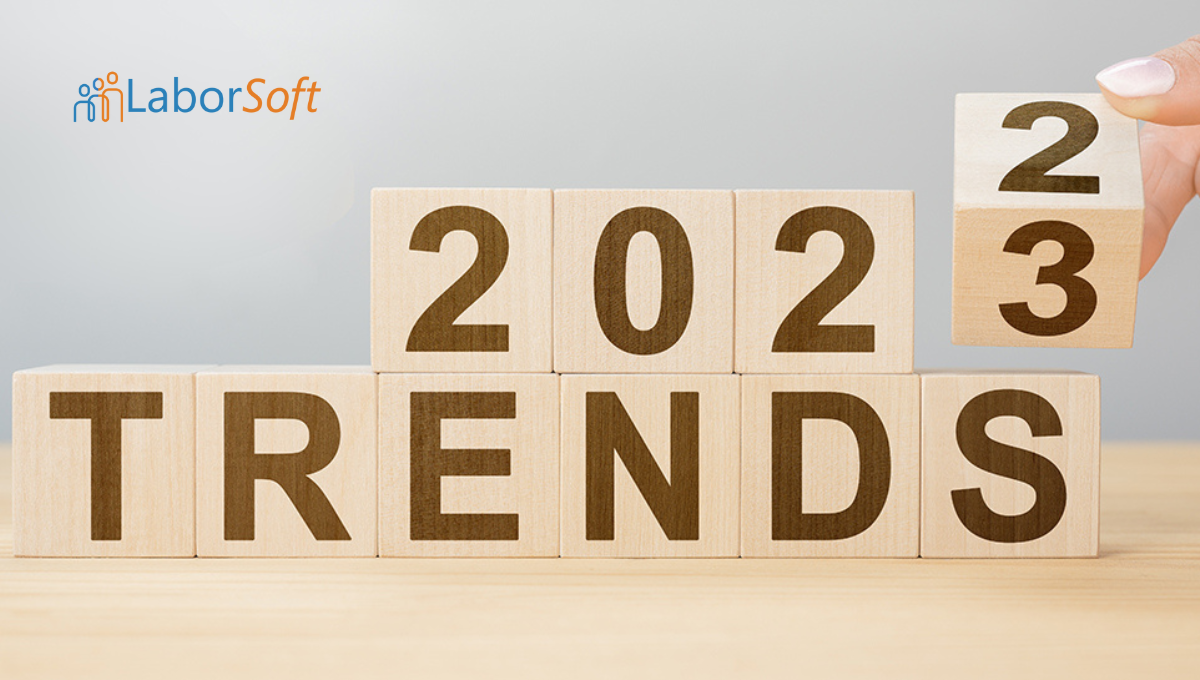6 Trends in Employee & Labor Relations in 2023
Read Time 3 mins | Dec 14, 2022 | Written by: Frankie Kourtis

Since the beginning of the COVID-19 pandemic, human resources have undergone significant change and evolution, leading to the drastically altered post-pandemic era that is today visible. Technology has ingrained itself into everyone's lives as more and more businesses adopt a remote work culture, and the human resources sector is not far behind.
Every employee-related task falls under the view of the human resources department in any corporation or institute. These tasks include hiring, onboarding, paying, managing, training, promoting, and terminating personnel. Human resources are regarded as the most crucial of all corporate resources.
The six HR trends that businesses should watch out for in 2023 include:
-
Hybrid work model
- One of the HR trends that the majority of organizations should watch out for in 2023 is the hybrid work model. Because of the COVID-19 epidemic, employees can now work from home instead of having to constantly travel to their offices, which is a great development. Many businesses that had believed that good performance with employees working from home was impossible were shocked to learn that such HRMS Software may continue to function well even during a global shutdown. Hybrid employment will be very advantageous to the IT industry in 2023. The majority of skilled workers can do their work from home and yet meet deadlines. -
A human approach to employee-manager relationships
- Hybrid workplaces have increased management complexity, and manager expectations have risen dramatically. Now that organizations have hybrid work support systems, HR managers in 2023 will refocus their efforts on forging bonds with new hires and fortifying bonds with team veterans. -
Employee visibility
- Measuring and monitoring employee performance during hybrid employment poses a unique difficulty. Employers who support flexibility provide their staff members the freedom to select how they want to work within the constraints set by the business. With the change to hybrid work, employee visibility takes on new significance, and businesses must find strategies to ensure employees, whether they work remotely or in an office, are acknowledged and included. -
Economic Scarce/Recession proof tech
- Economic scarce/Recession-proof tech is another HR trend that most firms, especially the HR departments, should look out for in 2023, given the frequent predictions of a global economic recession. By 2023, it will be standard practice for most businesses to integrate AI into every phase of the employee life cycle, from hiring to retirement. It's unclear how quickly AI will be implemented outside these businesses, but this is happening for a good cause. AI will assist businesses in surviving the anticipated recession without incurring high costs for employee recruiting or retirement. -
Employee Experience Redefined
- Another trend in HR come 2023 is the employee experience. The era of employees adhering to a single company and keeping up with their work to secure their retention has long since passed in the year 2023. Nowadays, people are less likely to devote their careers to working for a single company, especially if it doesn't have a positive culture or growth. The human resource departments of businesses work hard to improve the employee experience by providing flexibility and a pleasant working environment. -
Understanding a new generation of workers
- Companies across all sectors will gradually need to start making adjustments when a new generation enters the workforce, as well as HR experts. In most businesses, millennials already make up a higher portion of the workforce and will continue to do so. Generation Z graduates also start their careers after completing their education in high school or college. It won't take long for HR departments to realize that these younger employees have a distinct set of goals and priorities for their professional careers. Younger employees, for instance, even those who don't work entirely remotely, anticipate flexible schedules. Most workers from the two younger generations also prefer to communicate with their managers and supervisors frequently. They desire project collaboration as well as feedback on their work performance. To give millennial workers the collaboration and flexibility they crave, human resource professionals must adjust their policies to account for these preferences. But in the interim, there is still a mixed-generational workforce where "veterans" and "new bucks" coexist. Managing both sides of the coin is a skill HR management must possess.
When it comes to employee and labor relations management, LaborSoft’s innovative technology is an integral solutions to keep your business, in business. Our employee relations analytics, case management workflows, and our central repository of documentation streamlines case management to mitigate risk of operational bottlenecks, costly lawsuits, and legal ramifications stemming from HR issues and complaints. This sensitive data requires that maximum security protocols are in place and that your information is protected at all times. Contact us for a customized demonstration and learn how LaborSoft can help you improve communications, build a more collaborative, safe, and supportive workplace, while reducing the likelihood of costly litigation.

